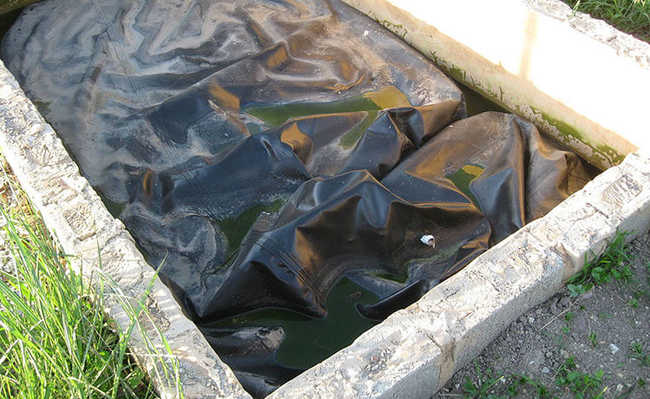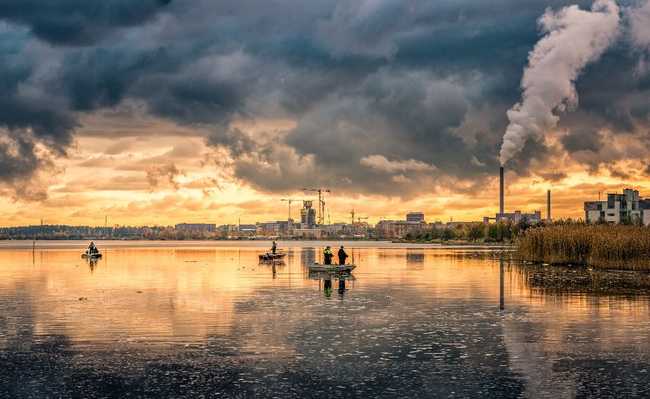What is thermoaline circulation
Thermohaline circulation is an essential ocean current for life on Earth.

Edited and resized image by Frantzou Fleurine is available on Unsplash
Global thermohaline circulation (CTG), thermosaline or thermohaline circulation, is a concept that refers to the movement of oceanic waters through all hemispheres, responsible for the warming and cooling of certain regions. The word "thermohaline" comes from the word "thermohaline", where the prefix "term" refers to temperature, and the suffix "halina" refers to salt.
This oceanographic phenomenon is mainly driven by the difference in density between the ocean currents - which is determined by the amount of salt and water temperature. With global warming and the melting of the polar ice caps, the salt concentration decreases, which can stop thermohaline circulation.
- What is global warming?
Some scientists have warned that this scenario could be catastrophic for humanity by significantly increasing the amount of hydrogen sulfide (H2S) in the ocean and atmosphere. This gas, with a high potential to damage the ozone layer, was responsible for past mass extinctions. Understand:
- What is the ozone layer?
How Thermohaline Circulation Works
In the ocean as a whole, salt water is at the surface - because it is warmer than water with less salt. These two regions do not mix, except in some special cases, such as in thermohaline circulation.
Planet Earth, characterized by latitudinal differences, receives a greater amount of solar energy at the equator, which is the region closest to the sun. Thus, in this area, the amount of evaporation of sea water is greater, which consequently causes a greater concentration of salt.
Another phenomenon that increases the concentration of salt in the ocean is ice formation. Thus, both in regions with greater evaporation of sea water, as in areas where there is ice formation, there is a greater concentration of salt.
The part that contains the highest concentration of salt is denser than the part that contains the least salt. Thus, when a part of the ocean that contains more salinity comes into contact with a part of less salinity, a current forms. The region with the highest density (with the highest concentration of salt) is swallowed and submerged by the region with the lowest density (with the lowest concentration of salt). This submersion creates a very large and slow current, called a thermohaline circulation.
Check out how the movement of thermoalline circulation occurs in the animation made by NASA in the video below:This animation shows one of the main regions where marine current pumping occurs, in the North Atlantic Ocean around Greenland, Iceland and the North Sea. The surface ocean current brings new water to this South Atlantic region via the Gulf Stream, and the water returns to the South Atlantic via the North Atlantic Deepwater current. The continuous influx of warm water into the polar ocean of the North Atlantic keeps the regions around Iceland and southern Greenland virtually free of sea ice year-round.
The animation also shows another feature of the global ocean circulation: the Antarctic Circumpolar Current. The region around latitude 60 south is the only part of the Earth where the ocean can flow across the world without land in its path. As a result, surface and deep waters flow from west to east around Antarctica. This circumpolar movement connects the planet's oceans and allows the Atlantic deepwater circulation to increase in the Indian and Pacific oceans and the surface circulation to close with the northward flow in the Atlantic.
The color of the world ocean at the beginning of the animation represents the density of the surface water, with dark regions being denser and light regions being less dense. In animation, movement is accelerated to improve understanding of the phenomenon. But in reality this movement is very slow and it is difficult to measure or simulate it.

Resized image by Kathleen Miller
The cessation of thermohaline circulation can be disastrous
In the last two decades, there has been a growing concern in the scientific community regarding the cessation of thermoaline circulation. As global temperatures rise, Greenland's ice caps and arctic regions have begun to melt at an alarming rate. The Arctic, which contains about 70% of all fresh water on Earth, dilutes the concentration of salt in the ocean.
The decrease in salt concentration interrupts the flow of current generated by the density gradient. According to a study published in the journal Nature, the liquid flow of the thermohaline circulation has decreased by 30% since the 1950s.
This deceleration of thermohaline circulation may explain the decrease in temperatures in certain regions. Although overall global temperatures increase, the absence of warm currents in naturally occurring regions will result in lower temperatures.
But there is still a lot of uncertainty about the effects of cooling currents. If temperatures drop a little, they could simply counteract the effects of global warming in regions like Europe.
This is not to say that the rest of the world will be so lucky. In a darker setting, a drastic reduction in thermohaline circulation can cause temperatures to drop considerably. If the slowdown continues, Europe and other regions that rely on thermohaline circulation to keep the climate reasonably warm and mild can look forward to an ice age.
A more worrisome result of a cessation of thermohaline circulation is the potential triggering of an anoxic event - anoxic waters are areas of seawater, freshwater, or groundwater that are depleted of dissolved oxygen and are a more serious condition of hypoxia.
Anoxic events have been associated with disruption of ocean currents and global warming events in Earth's prehistoric period. As the oceans become more stagnant, marine life becomes more active. Oceanic organisms like plankton, which do not have enough movement to counteract the currents, have the opportunity to reproduce in large numbers.
As ocean biomass increases, the amount of oxygen in the ocean begins to fall. Life in the oceans needs oxygen to survive, but with many organisms, getting oxygen becomes difficult. Regions that are low in oxygen can turn into dead zones, areas in which much of the marine life cannot survive.
During these anoxic events in Earth's past, large amounts of hydrogen sulphide were released from the oceans. This harmful gas is associated with mass extinctions, as mammals and plants cannot survive with its presence in the atmosphere.
The same researchers also demonstrated that the release of this gas would have damaged the ozone layer. This theory was supported by fossil records that showed scars related to ultraviolet (UV) radiation. Massive amounts of UV radiation would further facilitate the extinction of terrestrial organisms. Human life as we know it under these environmental conditions will be impossible.
A fact that is even more frightening is that, every time there was mass extinction and the cessation of thermohaline, the Earth had record global temperatures and high levels of carbon in the atmosphere. During the Permian-Triassic extinction, atmospheric carbon levels reached 1000 ppm. Current concentrations are at 411.97 ppm (parts per million). The Earth is still far from reaching catastrophic carbon levels, but that's no reason to let that question go.
There needs to be an understanding that once thermohaline circulation stops, it cannot be restarted until a little less than a million years have passed!










